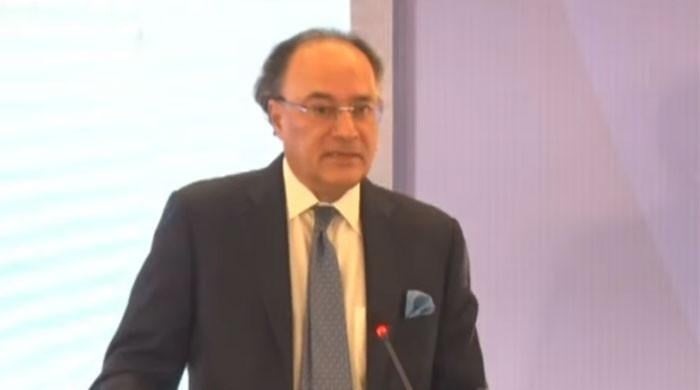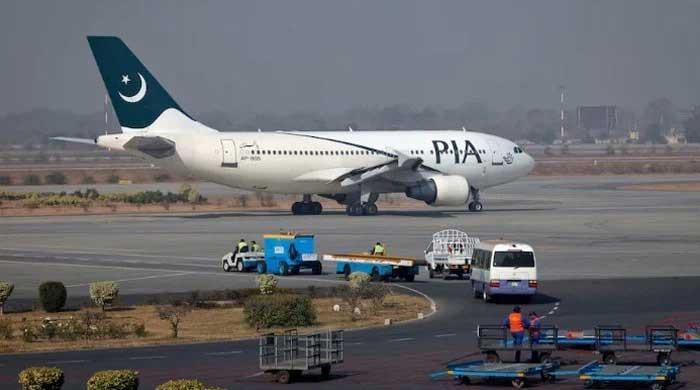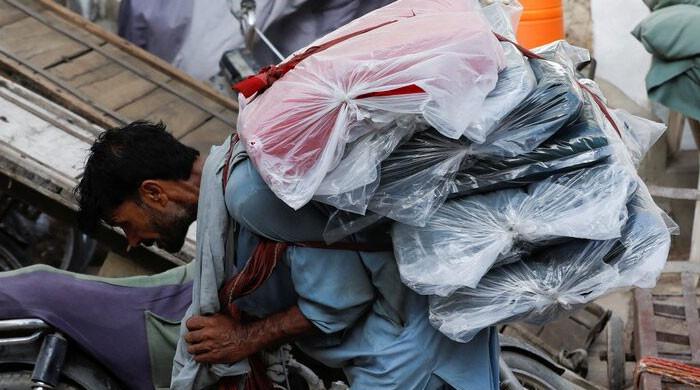Inflation to remain high in coming months, warns finance ministry
Inflation expected to hover around 28 to 30% in coming months, states monthly economic update and outlook for February
March 01, 2023

- Report cites several reasons including uncertain political, economic environment.
- Govt is closely monitoring demand-supply gap of essential items.
- Interest payments to add to total expenditures.
ISLAMABAD: Inflation is expected to hover around 28 to 30% in the coming months due to several reasons before easing out gradually, according to the finance ministry's monthly economic update and outlook for February.
Whereas interest payments would add to total expenditures, limiting the fiscal space to carry out normal operations, investments, and social and structural policies, it noted.
In its monthly report released on Tuesday, the ministry said that the key reasons are "uncertain political and economic environment, pass-through of currency depreciation, the recent rise in energy prices and increase in administered prices".
Although the State Bank of Pakistan (SBP) has been enacting a contractionary monetary policy, inflationary pressures would take some time to settle. The federal government, in liaison with provincial governments, is closely monitoring the demand-supply gap of essential items and taking necessary measures to stabilise prices, the report stated.
The resumption of an economic stabilisation programme would help achieve economic and exchange rate stabilisation, while also providing an opportunity to reap the benefits of falling international commodity prices.
“This will also help contain cost-push inflation and provide a cushion to the government to pass through the lower commodity prices to domestic consumers,” it said.
The report said favourable weather and uptake of inputs by farmers should help meet 28.4 million tonnes wheat target, whereas Kissan package disbursements too should have a positive impact on agricultural productivity and overall economic activity.
Large-scale manufacturing's (LSM) cyclical pattern positively correlated with the cyclical position of Pakistan’s main trading partners, and in December 2022, LSM activity came in as expected, implying that no unexpected shocks appeared in that month.
However, the international economic environment remains uncertain. This was illustrated by the CLI in Pakistan’s main export areas, which were somehow negative as compared to historical standards.
The ministry expects LSM to grow in January compared to the previous month, partly due to seasonal factors. “Measured on YoY basis, LSM output may marginally decline, mainly due to the high base effect in the reference period,” the ministry forecast.
It further said that the average Monthly Economic Indicator (MEI) during the first seven months of the current fiscal year was positive, but remained slightly negative in the last four months. Since October 2022, MEI witnessed negative growth with some improvement in the following months till January.
On the balance of payment data, exports of goods decreased by 11.7% on YoY basis in January 2023 and exports of services increased by 17.3%, which can be justified due to the economic slowdown in traditional export destinations of Pakistan.
A negative seasonal effect in January led to a 4.3% MoM decline in total exports, whereas the import contraction trend continued. Thus, a significant improvement in the trade balance was transmitted in the current account deficit, which stood at $242 million as compared $290 million in December.
Remittance inflows also observed a negative seasonal effect in January, declining to $1,894 million as compared to $2,102 million in December 2022.
A recovery is however expected in remittances after the gap between the interbank and open markets happened after adjustments in the exchange rate. As a result, further improvement could be seen in the current account.
Despite considerable challenges both on the domestic and external fronts, the fiscal sector performance remained satisfactory. The government has been able to restrict the fiscal deficit in terms of GDP at the same level as last year while the primary balance remained in surplus.
The improvement was attributed to the government’s prudent expenditure management strategy, which resulted in a 3.9% decline in federal non-mark-up expenditures on the back of a decline in subsidies and grants.
The current policy stance has enabled the government to increase expenditures on vulnerable segments of society through Benazir Income Support Programme (BISP) and poverty alleviation fund. On the revenue side, the ministry said that despite a slowdown in economic activity, tax and non-tax collection have improved.
Particularly, the Federal Board of Revenue (FBR) tax collection maintained its growth trajectory above 18% during the first seven months of the current fiscal year. “Encouragingly, domestic tax collection, in particular, direct taxes are growing at rapid pace indicating effective implementation of administrative and enforcement measures,” it noted.
Although risks persist due to economic activity and growth slowdown, continuing efforts to boost tax collection would aid in meeting the full-year target, especially in view of the recently enacted Rs170 billion additional taxes.











